
The second half of our first day in Beijing was spent touring several of Beijing's hutong neighborhoods. For those that don't know, the hutong is one of the traditional forms of courtyard housing in China. I do not know how widespread the type is, Shanghai for example has its own variation, but it is certainly all over Beijing's center.
As is surely the case every time a historic housing stock is threatened by new development, defenders spring up to defend the structures and the way of life they house. In response, others, accusing the defenders of excessive nostalgia, argue that new development is good because the old structures are over-crowded, lack proper sanitation and provide a quality of life approximate to the date of their construction.
Beijing has not been spared this debate. Intellectually, I side with the latter, but emotionally (particularly after seeing the quality and peripheral location of new development), it becomes hard not to side with the former. As is always the case, the truth likely lies somewhere in the middle.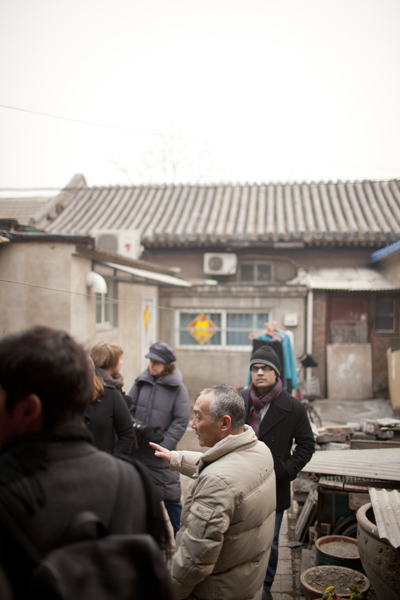 the man who lived in the hutong we were able to visit in detail
the man who lived in the hutong we were able to visit in detail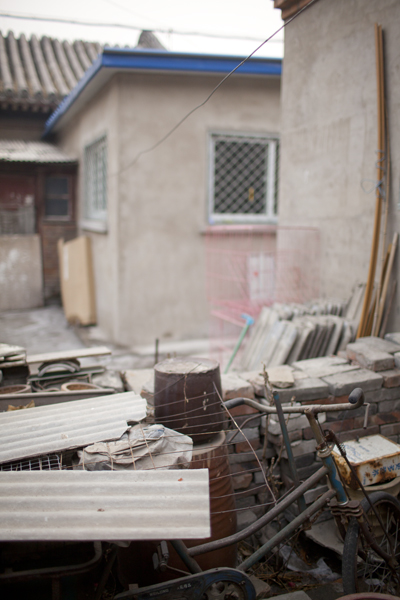

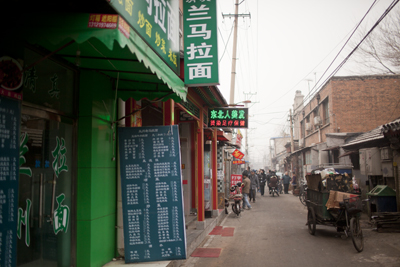

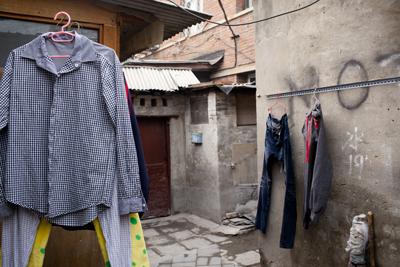

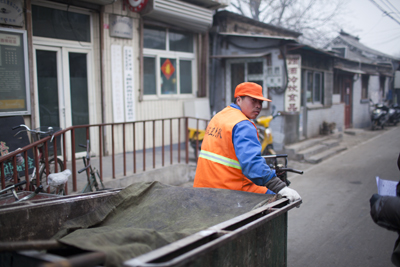

What I found far more interesting was the apparent place the hutong occupies in the imagination of Chinese consumers. While Beijing may be tearing down hutong neighborhoods as brisk clip, they are building new hutong-themed shopping centers just as quickly. Stripped of many of the charming or obnoxious features of hutong neighborhoods like narrow streets, unique odors, and, well, residents, these hutong-style structures house, along with awful tourist traps, international chains like Starbucks and the various luxury good chains that flourish in East Asia. Notable also is the location of the this street. Just south of the Qianmen, the gate that defended the original Ming imperial city, it lies across the (very large and basically impassable) street from Tiananmen Square and along the Imperial axis that runs through the center of Beijing. An important space, and an odd choice for what is essentially a tacky throwback outdoor shopping mall. 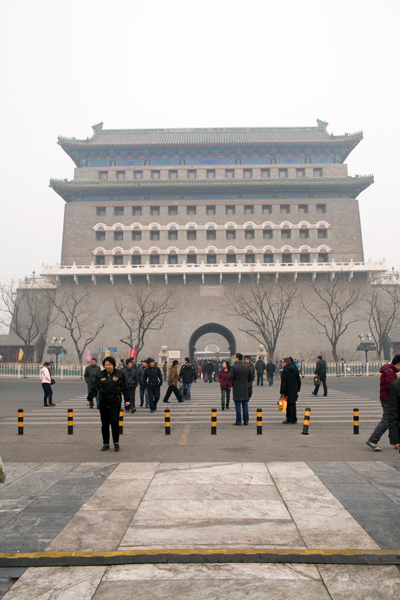 Qianmen
Qianmen
We see a little of this phenomenon in Boston with Faneuil Hall and to a lesser degree Newbury Street, both shopping areas, but the location and scale of this area distinguishes it from every other themed shopping street I have visited. In addition, its construction literally in the middle of the "debate" about what to do with Beijing's historic housing stock and the associated populations also makes this site particularly poignant.  storefronts yet to open
storefronts yet to open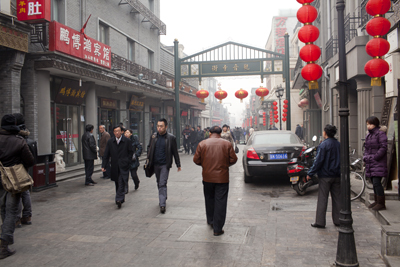
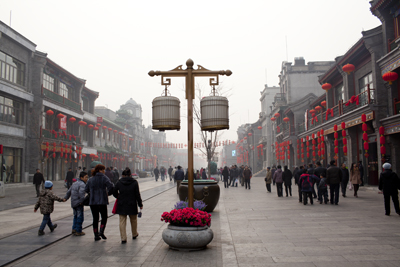 you can only sort of tell from this photo, but this street goes on for quite some time. with the pollution, it was to the horizon.
you can only sort of tell from this photo, but this street goes on for quite some time. with the pollution, it was to the horizon. 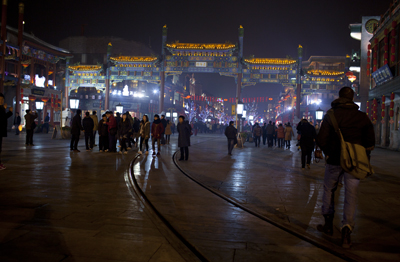 the old new china at night
the old new china at night
Anyway, nothing terribly profound, just one of the more interesting new commercial spaces of the city center. The next posts will deal with our site on the periphery, which was a wholly different animal.
Thanks for reading.



6 Comments
we should talk hutong sometime.
very potent post, always interesting to follow the GSD blogs. I just got done working an internship for a French firm in Beijing and am heading back there this summer after graduation. I befriended a young designer named Conway Pedron over there who is in the GSD program as well, should connect you with him if you are not already. Nice photos and comments, cheers and godspeed with your studio proposal.
Another foreign architect interning in Beijing here. To the debate regarding the hutong demolishment, I sometimes wonder if the preference of the government to operate in a top-down manner inherently prevents them from engaging with the bottom-up nature of these settlements. Like some sort of upgrading of infrastructure / community amenities which preserves the additional economic / social role of housing.
One of the first places I visited when I got to Beijing is Zhejiancun, a self-built migrant village along the southern periphery. By the mid 1990's it had developed into a self-sufficient economy (based on textiles), at which point the government went in and tore down the informal constructions and related practices. Of course, this sort of emergent, self-organizing community would have to be viewed suspiciously by the government, and consequently becomes a lost oppurtunity to deal with informal settlements in a more strategic fashion.
(Not that I think this is the optimal solution for the hutongs in the city center).
what did you think of zhejiangcun? i have only read about it. it was my understanding that these settlements would reform in a different part of the city after they were destroyed. do you know this to be the case?
Did you happen to visit Nanluoguxiang? I used to live in another hutong right off of that one when I lived in Beijing. It sometimes felt like a bit of a tourist trap, but overall it seemed to be a successful way of giving the street a more current identity and livelihood.
well, compared to the hutongs in the city center, zhejiangcun is noticeably more deteriorated. From what I read, the village never recovered from the demolishment in 1995 - but I don't know if the activities reformed elsewhere. Perhaps you would know more than me about this, actually. You mentioned your site was on the periphery, and it deals with a migrant community - is the situation similar?
Block this user
Are you sure you want to block this user and hide all related comments throughout the site?
Archinect
This is your first comment on Archinect. Your comment will be visible once approved.